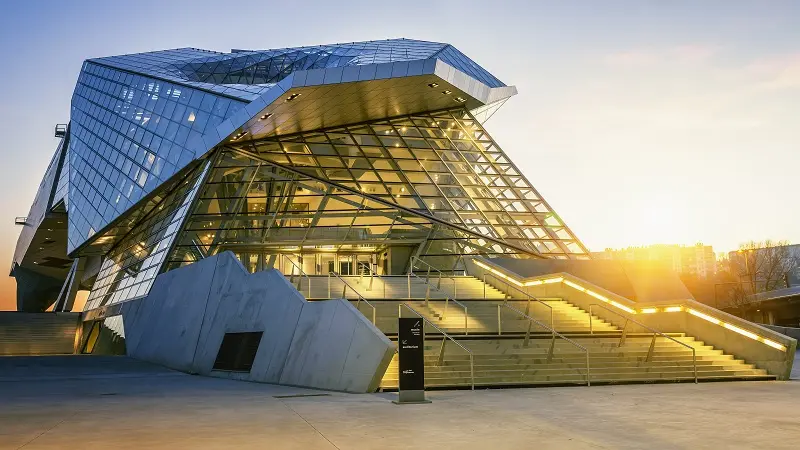Canada’s architecture is as diverse as its geography, culture, and history. From Toronto’s shimmering glass high-rises to Vancouver’s cutting-edge cultural centers, Canada offers a unique blend of tradition and modernity. The defining characteristic of Canadian architecture is that it balances futuristic design with elements drawn from ageless arts—traditional aesthetic principles founded on visual harmony, craftsmanship, and functional beauty.
For homeowners, architecture enthusiasts, and cultural explorers, this blend offers the potential for residence within spaces that are as beautiful as they are functional. Whether walking through city streets or suburban neighborhoods, Canada showcases how architecture can be modernized without sacrificing artistic heritage.
The Evolution of Canadian Modern Architecture
Canadian contemporary architecture has taken many forms over the decades. Early influences came from European modernists in the 20th century, and subsequent architects embraced postmodernism, minimalism, and experimental structural forms. Major urban centers like Toronto, Montreal, and Vancouver served as laboratories for architects eager to experiment with glass facades, open-concept interiors, and green building.
The common philosophy connecting these undertakings is the doctrine of evergreen arts—architectural principles that are never outdated. These include balance, proportion, simplicity, and harmony with nature. Buildings are designed not only to be functional but also to evoke a sense of timeless beauty.
Iconic Examples Around Canadian Cities
Across Canada, landmarks embody these principles:
- Toronto: Frank Gehry’s renovation of the Art Gallery of Ontario demonstrates bold modern innovation tempered by classical proportion. Condos often feature clean lines, open layouts, and abundant natural light.
- Montreal: Habitat 67 is a postmodern icon, blending geometric innovation with practical living spaces.
- Vancouver: The Vancouver Art Gallery and False Creek high-rises showcase a subtle balance between modern design and environmental sustainability.
These developments illustrate how modern architecture enhances urban life by combining aesthetics, functionality, and cultural sensitivity.
A Stroll Through Contemporary Eras
Canada’s architecture is a living textbook, with each era leaving its mark on residences, public buildings, and cultural landmarks. From early colonial buildings to modern glass-and-steel skyscrapers, the evolution is evident and instructive.
During the mid-20th century, a particularly influential movement arose that continues to inspire designers today. Homes from this period feature clean lines, integration with natural surroundings, and practical layouts ideal for contemporary living. The appeal lies in the ability to combine this timeless aesthetic with modern amenities. For those seeking a unique lifestyle, mid century modern style homes exemplify this approach—offering classic charm while incorporating energy-efficient products, smart home technology, and minimalist interiors.
Architectural epochs do more than beautify cities—they tell stories. They reveal social values, technological advances, and cultural aspirations. In Canada, the preservation and renovation of older homes reflect a commitment to honoring history while embracing the present.
Merging Tradition and Innovation
Modern Canadian architecture seeks a balance between tradition and innovation. Architects aim to respect local history, community culture, and natural landscapes while experimenting with new materials, energy-efficient solutions, and bold forms.
New residential developments often mix green building practices with traditional design cues. Rooflines, window placements, and floor plans reference older architectural traditions while providing modern efficiency and aesthetic appeal. This approach ensures that new constructions are more than buildings—they are lasting contributions to communities that feel familiar, functional, and progressive.
Living in Spaces That Inspire
A tangible way to experience Canadian architectural innovation is through residential homes. Urban and suburban neighborhoods feature homes that blend the charm of older architecture with modern conveniences. Buyers increasingly seek properties that offer character alongside practicality.
Whether it’s a century-old brick home updated with contemporary interiors or a mid century modern style dwelling that combines original woodwork with open-plan living, Canadians have access to residences that reflect timeless design. These spaces allow residents to live comfortably in intelligently designed environments that foster both beauty and function.
Architecture and Community Culture
Canadian architecture shapes more than buildings—it defines how communities live, interact, and connect. Thoughtfully designed public spaces—parks, libraries, cultural centers, and plazas—encourage civic engagement and personal well-being. Modern architecture influenced by evergreen arts emphasizes inclusivity, accessibility, and harmony with nature.
Both residential and public developments demonstrate that good design is more than aesthetics. It creates environments that uplift, support well-being, and foster connections among people and with their surroundings.
The Future of Canadian Architecture
Looking ahead, Canadian architecture continues to embrace sustainability, technology, and social responsibility. Green certifications, renewable materials, and smart designs are becoming standard in both residential and commercial projects. Inspiration from historic and mid-century designs continues to guide modern aesthetics, ensuring buildings remain visually and culturally relevant for decades.
The lesson is clear: architecture that combines innovation with lessons from timeless arts can elevate everyday living. Canadians enjoy the best of both worlds—a living environment that respects heritage while embracing modern functionality.
Conclusion
Canada’s modern architecture is a testament to creativity, heritage, and forward-thinking design. From iconic city landmarks to mid century interior design residences, Canadian buildings demonstrate that spaces can be both functional and breathtaking. By blending tradition with innovation, the country provides environments that inspire, sustain, and enrich the lives of residents and visitors alike.
